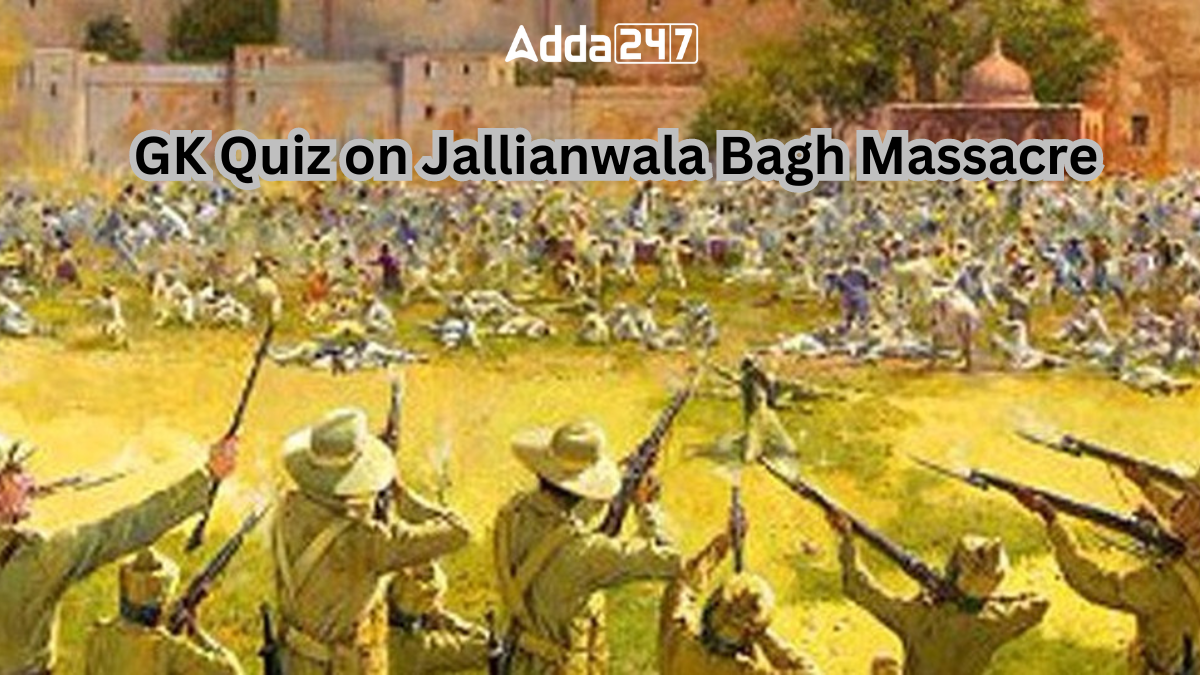The Jallianwala Bagh Massacre is a poignant chapter in India’s struggle for independence from British colonial rule. On April 13, 1919, the peaceful gathering of thousands of Indians at Jallianwala Bagh, Amritsar, turned into a tragic event when British troops under the command of Brigadier General Reginald Dyer opened fire on the crowd. To commemorate this significant event and to test your understanding of its historical importance, here’s a quiz that delves into various aspects of the Jallianwala Bagh Massacre.
What is Jallianwala Bagh Massacre?
The Jallianwala Bagh Massacre was a tragic event in Indian history that occurred on April 13, 1919, in Amritsar, Punjab, during British colonial rule. British troops, led by Brigadier General Reginald Dyer, opened fire on a peaceful gathering of unarmed civilians at Jallianwala Bagh, resulting in hundreds of deaths and injuries. The massacre sparked outrage across India and played a significant role in the Indian independence movement.
GK Quiz on Jallianwala Bagh Massacre?
The Jallianwala Bagh Massacre was a tragic event in Indian history that occurred on April 13, 1919, in Amritsar, Punjab, during British colonial rule. Test your knowledge about Jallianwala Massacre through our GK Quiz on Jallianwala Bagh Massacre:
Q1. When did the Jallianwala Bagh Massacre occur?
a) April 13, 1918
b) April 6, 1920
c) April 13, 1919
d) March 23, 1919
S1. Ans. (c)
Sol. Jallianwala Bagh Massacre, incident on April 13, 1919, in which British troops fired on a large crowd of unarmed Indians in an open space known as the Jallianwala Bagh in Amritsar in the Punjab region (now in Punjab state) of India, killing several hundred people and wounding many hundreds more.
Q2. Who ordered the firing at Jallianwala Bagh?
a) General Dyer
b) Mahatma Gandhi
c) Jawaharlal Nehru
d) Winston Churchill
S2. Ans. (a)
Sol. General dyer ordered his troopes to order fire on a crowd of non violent protestors gathered in Jallianwala Bagh on the day of Baisakhi .
Q3. How many people were killed in the Jallianwala Bagh Massacre?
a) Approximately 200
b) Approximately 500
c) Approximately 1,000
d) Approximately 379
S3. Ans. (d)
Sol. As many as 1,650 rounds were fired, and while the British put the official death toll at 379, many believe that the actual toll was in the thousands. Soon after, Dyer imposed a strict curfew in the area, effectively ensuring that help would not reach the wounded.
Q4. Who chaired the investigation commission into the massacre?
a) Lord Mountbatten
b) Lord William Hunter
c) Lord Curzon
d) Lord Cornwallis
S4. Ans. (b)
Sol. Lord William Hunter chaired the investigation commission into the massacre.
Q5. Which act led to widespread discontent in India and contributed to the events leading to the massacre?
a) Rowlatt Act
b) Salt Act
c) Trade Act
d) Jallianwala Act
S5. Ans. (a)
Sol. The aftermath of World War I saw heightened expectations among Indians for greater political autonomy from British colonial rule. However, instead of easing repressive emergency powers, the British government passed the Rowlatt Acts in 1919, further inflaming tensions.
Q6. Who was the Lieutenant Governor of Punjab during the time of the massacre?
a) Sir Michael O’Dwyer
b) Lord Chelmsford
c) Lord Irwin
d) Sir Winston Churchill
S6. Ans. (a)
Sol. The lieutenant governor of Punjab at the time of the Jallianwala Bagh tragedy was Michael O’Dwyer.
Q7. Who led the nationwide movement against the Rowlatt Act?
a) Subhas Chandra Bose
b) Bhagat Singh
c) Mahatma Gandhi
d) Jawaharlal Nehru
S7. Ans. (c)
Sol. The act was opposed by Indian leaders, including Mahatma Gandhi, who called it a violation of human rights and an attack on Indian nationalism. On March 30, 1919, Gandhi launched a nationwide protest against the Rowlatt Act.
Q8. Which British official was the Governor-General of India during the time of the massacre?
a) Lord Mountbatten
b) Lord Curzon
c) Lord Chelmsford
d) Lord Cornwallis
S8. Ans. (c)
Sol. Lord Chelmsford was the Viceory of India when the Jallianwala Bagh massacre 1919 took place.
Q9. What was the outcome of the British government’s investigation into the massacre?
a) Censure and resignation of Reginald Dyer
b) Promotion of Reginald Dyer
c) Awarding of medals to British soldiers involved
d) No action taken
S9. Ans. (a)
Sol. The British government ordered an investigation, resulting in Dyer’s censure and resignation from the military.
Q10. What was the primary reason for the gathering at Jallianwala Bagh on April 13, 1919?
a) Political rally
b) Religious festival
c) Sports event
d) Peaceful protest
S10. Ans. (d)
Sol. A large, peaceful crowd had gathered at the Jallianwala Bagh in Amritsar, Punjab, British India, during annual Baishakhi fair, to protest against the Rowlatt Act and the arrest of pro-independence activists Dr. Saifuddin Kitchlew and Dr. Satya Pal.




 World’s 10 Richest Families in 2025: Top...
World’s 10 Richest Families in 2025: Top...
 Which is the Oldest Rainforest on the Ea...
Which is the Oldest Rainforest on the Ea...
 Narpuh Wildlife Sanctuary: Conservation ...
Narpuh Wildlife Sanctuary: Conservation ...







